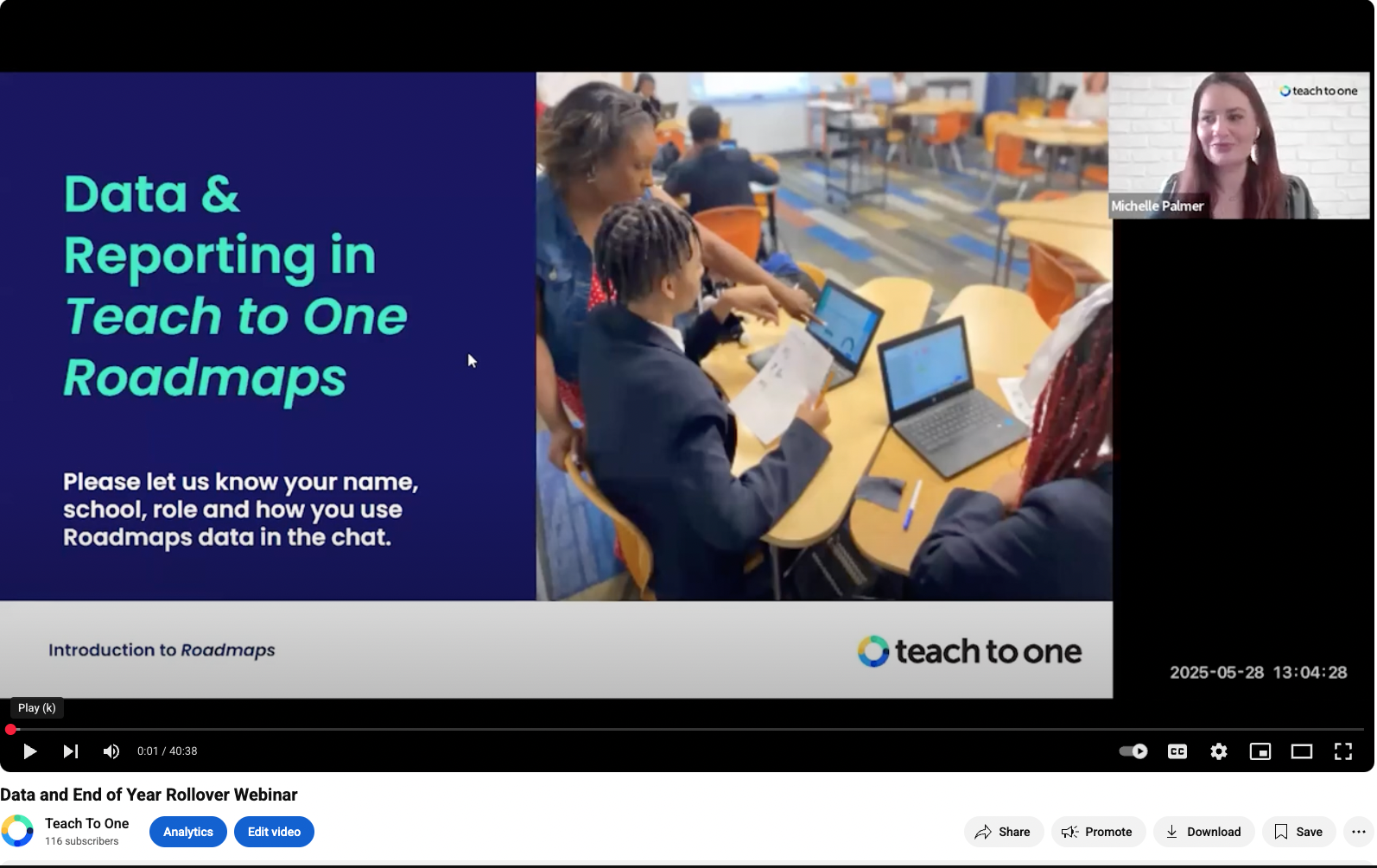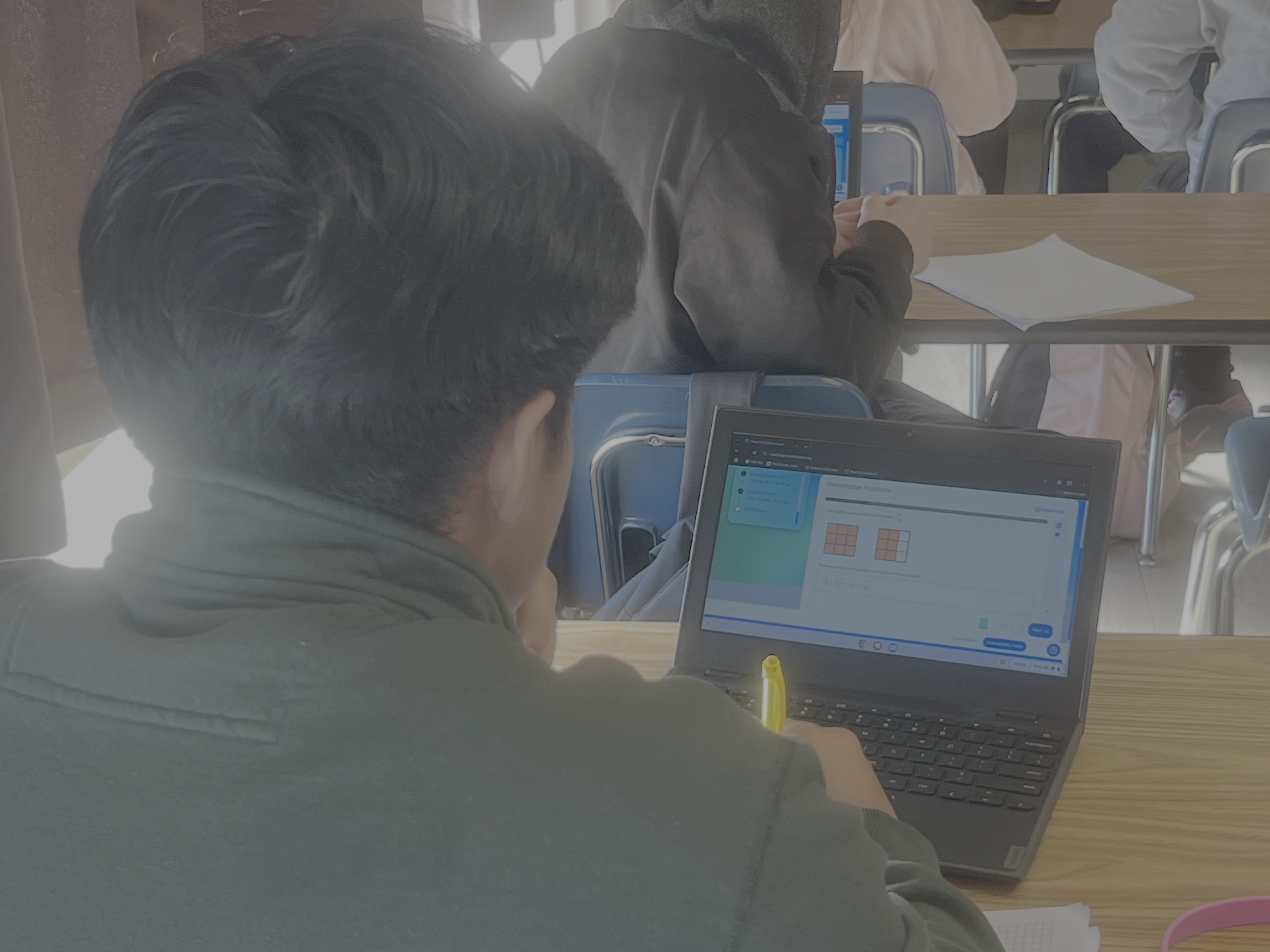Five common — yet avoidable — mistakes leaders make when choosing an ed-tech solution for their district math program
March 22, 2022
By Teach to One

Edtech has become an incredibly important investment for school districts. But for every success, there are instances where the promised benefits — for students, teachers, and administrators — have failed to materialize.
How do you ensure that your edtech solution reduces workload and removes unnecessary tasks for teachers, and supports more flexible and accessible learning for students?
Here are five common mistakes we see that typically bring technology investments to grief:
Mistake #1: Selecting a one-size-fits-all product
Using technology in the classroom does not, in itself, boost student achievement.
Google Docs may be an efficient way to collect assignments and offer feedback, but it won’t — in itself — improve the quality of student papers. Nor does merely replacing paper textbooks with digital ones strengthen students’ ability or desire to read.
Technology that lacks the tools to drive personalized learning may drive efficiency, but it won’t generate transformational learning experiences.
If the vision is to enable teachers to deliver personalized instruction (and it should be), the technology chosen must have the capacity to perform this within the parameters of each student’s unique learning objectives and available timeframe.
The goal should be nothing less than the complete flexibility to alter content and settings to tailor learning to each student’s unique strengths and needs — every day.
Mistake #2: Choosing boring lessons.
Deeply engaged students come alive in class and are more motivated. If lesson material isn’t inviting (and taught at the right time, aka, within a student’s zone of proximal development), your students will disengage and learn more slowly — or even completely fail to pick up new concepts.
A solid edtech solution enables the delivery of interesting and relevant high-quality content and improves student classroom participation beyond what’s been achievable with traditional (and increasingly obsolete) teaching practices.
This might include interacting with other students and classrooms around the globe through video conferencing, or submitting homework assignments as podcasts or videos and even gamifying problem-solving.
Mistake #3: The product only measures grade-level proficiency.
In traditional school models, students spend most of their time working on the same skills at the same time as their classroom peers. And their success is primarily measured based on annual state tests.
Such practices typically neglect the learning needs of top scorers — and those really struggling — to cater to those in the middle.
In fact, math reflects a series of approximately 300 interrelated skills that span a student’s mathematical learning—from the time they master basic numeracy in the lower elementary school grades through Algebra.
For example, in the sixth grade, the summative math test covers about 46 skills, such as how to evaluate numerical expressions. But students won’t know how to evaluate numerical expressions if they have insufficient exposure to multiplying and dividing large numbers in prior grades. To demonstrate true proficiency on that test, students must to know 32 (out of the 40) fifth-grade skills, 25 (out of the 42) fourth-grade skills, and 16 skills from before fourth grade.
We know that when students do not master prerequisite skills from earlier school years — especially in math — it becomes increasingly difficult for them to learn more complex concepts in later years. Nor is catching up a simple matter. In some cases, critical prerequisite skills may have been introduced several years prior and are revisited in increasingly complex applications over time.
Any edtech solution must be capable of building understanding and testing efficiently — regardless of where a student’s understanding starts.
Mistake #4: The product reporting does not empower the teachers
Often, when schools mandate the use of a specific technology, teachers are left without the tools (and sometimes the skills) to effectively integrate new capabilities into their teaching methods.
This results in new investments being underutilized, not used at all, or used in a way that mimics an old process rather than expanding and empowering the capabilities of teachers.
The fact is that the best adaptive edtech platforms can give teachers daily snapshots of individual students’ learning progress. This makes data-driven instruction possible, and more manageable.
This sort of reporting tracks progress daily, and integrates with lesson resources to rapidly design (and redesign) learning roadmaps, and even auto-suggests small groups of students working on the same skill.
This can reduce the need for teachers to work vast amounts of unpaid overtime hours analyzing students’ needs.
Mistake #5: Deciding on a digital tool that only works for discrete scenarios
A lot of edtech solutions are focused solely on supporting in-school activity, or are designed for just home settings. Few are truly capable of both.
Edtech solutions that lack the ability for the math to be effectively taught both in schools and at home will leave the students (and education leaders) that use them at a disadvantage in coming years.
It can also be detrimental to implement too many different tools that each only address a single need. When evaluating a digital solution, look for opportunities to use the tool in a variety of uses cases. A tool that can address supplemental classroom instruction, homework, tutoring, after-school programs, coverage for substitute teachers, and more, has tremendous value. Your budget and your internal product onboarding team will thank you.
Latest Posts

Recording: Data and End of Year Rollover Webinar
In this 45-minute webinar recording, Michelle Palmer, Senior Director of Customer Success, and Liat Greenspan, Associate Director of Program Success, explain how to assign a skill or pathway, use the Teacher Dashboard to identify struggling students, leverage the Reports Hub for weekly planning, and monitor growth and engagement on the Progress Page.

Getting Students Engaged in Math at Valley Charter
Students arrive at their assigned seats equipped with laptops and individualized Teach to One Roadmaps packets, which include a work time poster, a note-taking sheet, and graph paper.

Webinar Recording: Unlocking Algebra
On Tuesday, May 13, TNTP and New Classrooms released the report: Unlocking Algebra – What the Data Tells Us About Helping Students Catch Up. On the same day Adam Meier, Partner, Research Center of Excellence, TNTP, and Joel Rose, Co-founder and Chief Executive Officer, New Classrooms, presented the findings, recorded in the webinar below. Looking […]